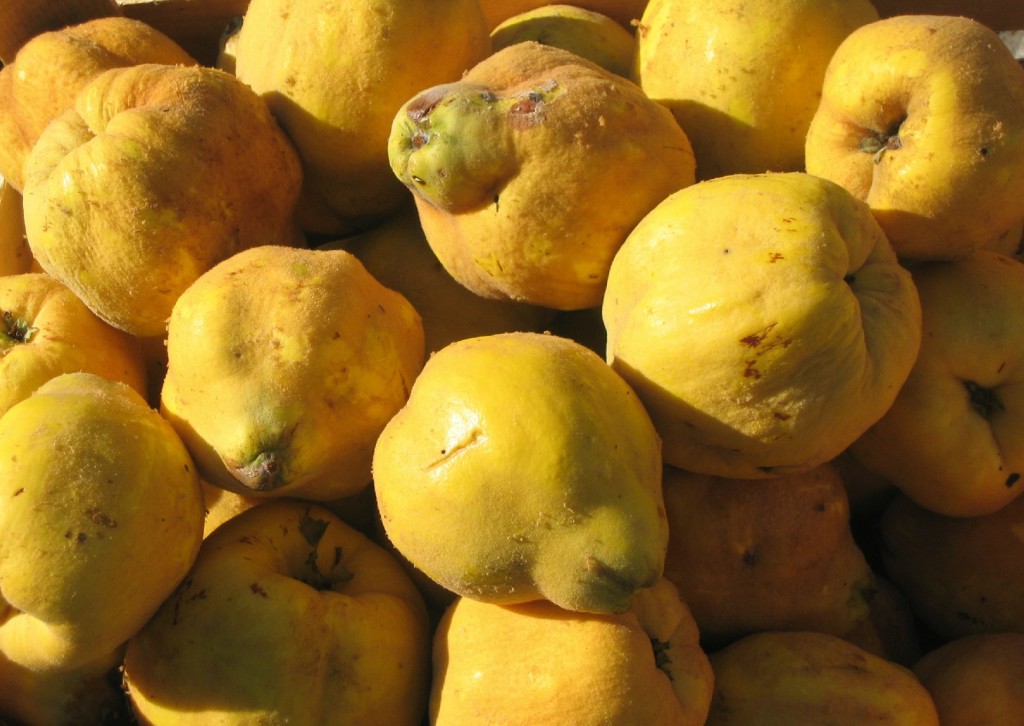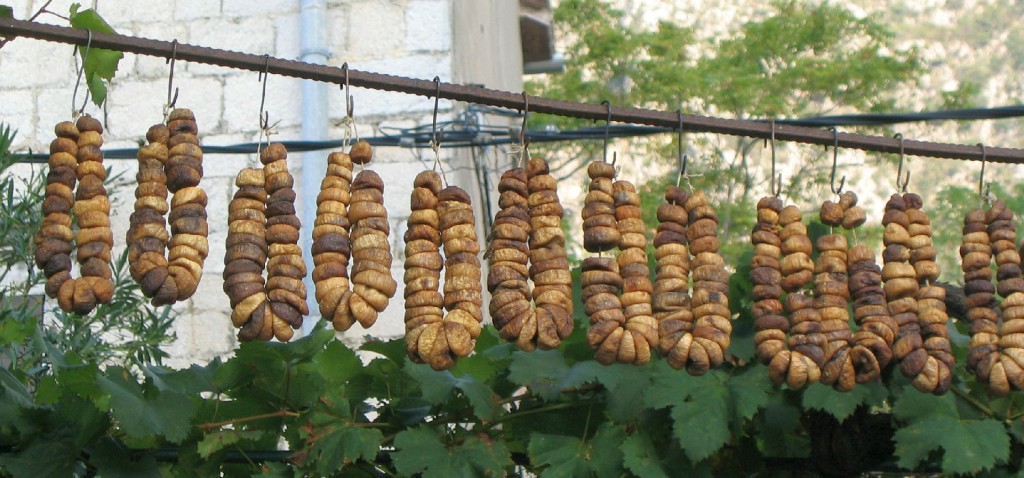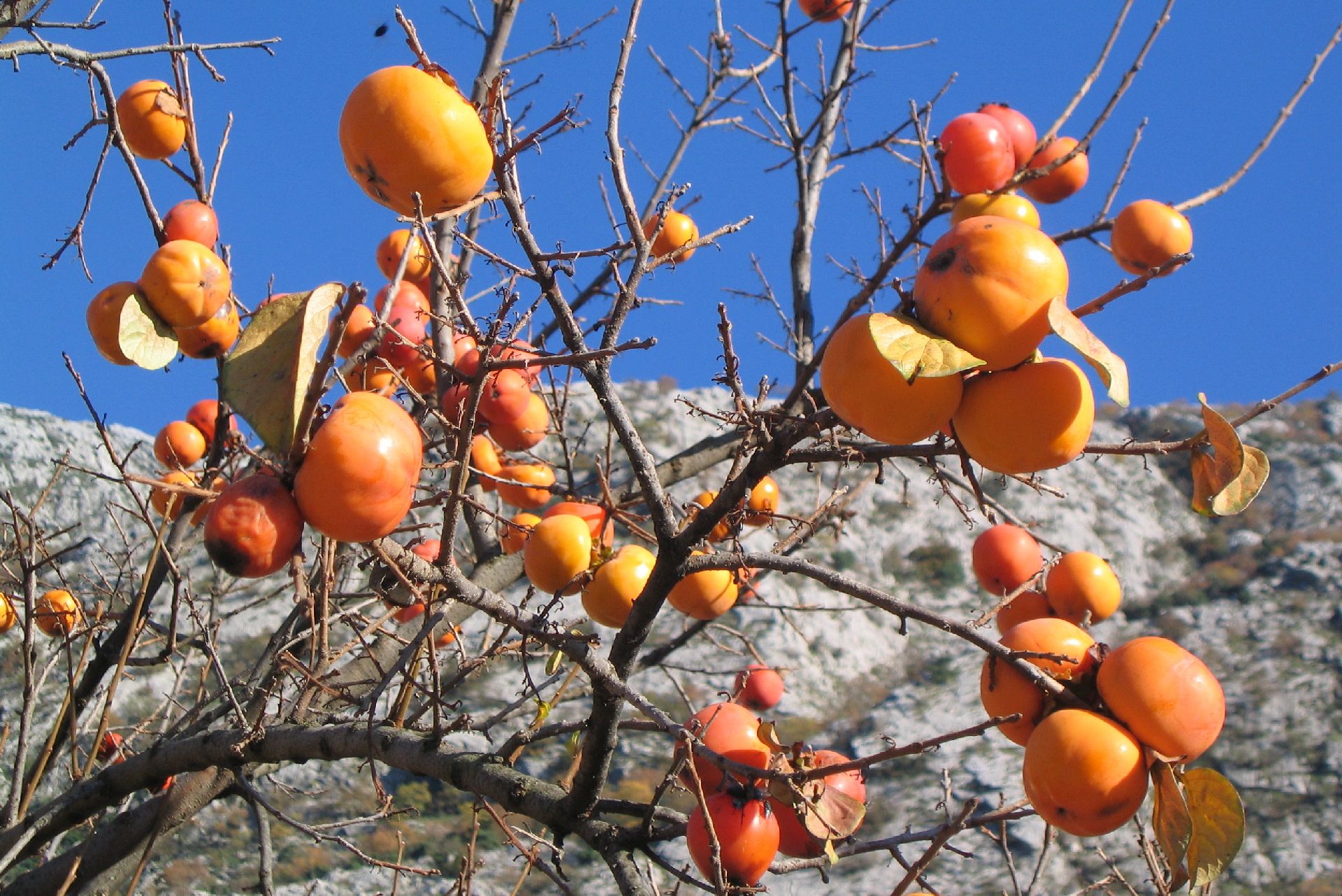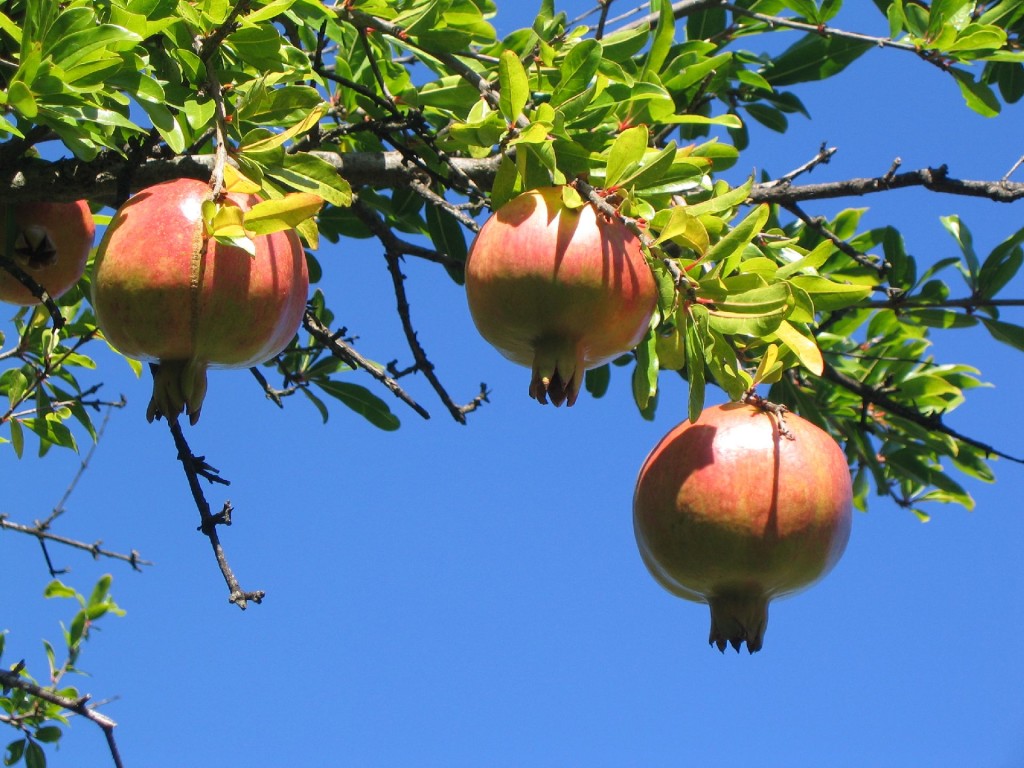 Traveling through Montenegro during autumn does not only offer colorful forests, quiet roads and sunny weather; you will also be surprised by typical “old-fashioned” fruit trees that can be seen in the gardens and orchards of many old village houses and farms: yellow quinces, orange persimmons, various figs, crimson-yellow pomegranates.
Traveling through Montenegro during autumn does not only offer colorful forests, quiet roads and sunny weather; you will also be surprised by typical “old-fashioned” fruit trees that can be seen in the gardens and orchards of many old village houses and farms: yellow quinces, orange persimmons, various figs, crimson-yellow pomegranates.
Each of these fruits is unique in use and appearance. Sometimes you can also see them being sold at the street markets. But take care: there are some things you have to know…
The exotic persimmon or kaki fruit (in Montenegro mostly called “japanska jabuka”, i.e. Japanese apple) looks like an orange tomato. When you see them growing on a tree called Diospyros (photo 1), you’ll think that they are ready for picking (photo 2). But don’t try to eat them: you have to wait until the fruit is fully ripe, red, soft and juicy. Otherwise, it will taste very bitter and acrid. Villagers often pick them before they are mature enough to eat, so that they can ripen on their own over time.
 When you have got a ripe kaki that looks as though it is rotten (!), you can just lift the skin and eat the sweet pulp with a spoon. It is very sweet and many people like the delicious taste. Moreover, you will find a lot of persimmon recipes on the internet, the pulp of the fruit being added to soft cookies, cakes, pies and bread. Persimmon is also useful as a natural medicine: it is high in fibers and rich in vitamin C. It may improve metabolism and help the body to cope with fat storage.
When you have got a ripe kaki that looks as though it is rotten (!), you can just lift the skin and eat the sweet pulp with a spoon. It is very sweet and many people like the delicious taste. Moreover, you will find a lot of persimmon recipes on the internet, the pulp of the fruit being added to soft cookies, cakes, pies and bread. Persimmon is also useful as a natural medicine: it is high in fibers and rich in vitamin C. It may improve metabolism and help the body to cope with fat storage.
Quince is another “weird” fruit (photo 3). It looks like a badly formed apple – or overgrown pear. It is ugly, irregular in shape, with dark patches, and it seems to have a kind of dusty cover on its skin. Do not eat a raw quince – it will be very unpleasant. To really appreciate a quince, you have to cook it. Before cooking you should peel it, slice it lengthways through the core, then cut again into quarters and take the core out of each piece.
In many village households you will find quince marmalade or compote, prepared for the winter in glass jars. But there are also more sophisticated recipes. Quartered, quince can be added to stews and casseroles as a sauce, in particular with pork! By the way, did you know that quinces are still used as air fresheners in many houses in the Montenegrin countryside? They really exude a fresh and sweet aroma.
 Fig trees can be found in many backyards and gardens. They grow on the Ficus tree, which is a member of the mulberry family, and have an opening, called the “eye”, which is not connected to the tree, but helps the fruit’s development by increasing its communication with the environment. Figs range in color and texture, depending on the variety. The most popular fig in Montenegro is called “petrovača”. Don’t buy hard green figs: a ripe fig is soft when you touch it!
Fig trees can be found in many backyards and gardens. They grow on the Ficus tree, which is a member of the mulberry family, and have an opening, called the “eye”, which is not connected to the tree, but helps the fruit’s development by increasing its communication with the environment. Figs range in color and texture, depending on the variety. The most popular fig in Montenegro is called “petrovača”. Don’t buy hard green figs: a ripe fig is soft when you touch it!
Figs are very healthy fruits: they help lower a high blood pressure, prevent breast cancer, lower insulin in diabetes and also have positive cardiovascular effects.
The majority of figs are dried (photo 4), so that they can be eaten during the whole winter season.
And finally the most beautiful autumn fruit: pomegranate (photos 6). If you want to know more about this delicious fruit, read my blog post: Pomegranate: Symbol of abundance and fertility.

